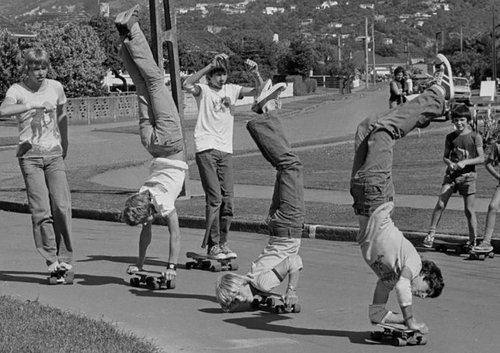
By Gareth Watkins
Insight is now the longest-running documentary programme on RNZ, having started back in the late 1960s. Gavin McGinley, RNZ National scheduler, recalls:
“As I remember, the National programme used to have a documentary on Sunday mornings in the 1960s. Most of the time they were BBC programmes with the occasional one from the ABC, CBC or SABC. Then I think they began to alternate – one homegrown documentary, one overseas. The first time I remember Insight being used as a series title was about the time I moved to 2ZD Masterton in 1969. And for the next few years the programme was known as Insight ‘69, Insight ‘70, Insight ‘71, etc.”
Adriann’s documentaries from the late 1990s cover a diverse range of subject matter – from revamping the public service to body image.
One that caught my eye from 1997 was “Culture and Cool” – young people speak about cultural change and the influence of mass media on cultural ideas. In this edited excerpt, students from Rongotai College in Wellington talk about how music influences fashion and how media influences language.
Insight ‘97, “Culture and Cool” (Radio New Zealand).

Rock and roll dancers at Youth Club, Taita, Lower Hutt.
Photographic negatives and prints of the Evening Post newspaper. Ref: EP/1957/3619-F. Alexander Turnbull Library, Wellington, New Zealand.
While we are on the subject of “bombing” and graffiti, there was a fascinating Spectrum documentary deposited with Ngā Taonga Sound & Vision a few months ago, featuring prolific young Wellington tagger “Ketty.” In this excerpt, producer Lucy Smith asks “Do you accept people hate […] what you do?”
Spectrum (RNZ National, 5 June 2016)
You can hear the full Spectrum programme here.
Back in the 1980s, solvent and drug abuse was highlighted as a youth issue in another Insight documentary:
Insight 1989, “I’m not a Juvenile Delinquent” (Radio New Zealand)
So where do these issues stem from? The next audio clip from the 1958 series, “Youth Without Purpose,” offers a possible answer: “In a lack of family cohesion, a lack of a sense of belonging lies the seed ground of delinquency.” In this excerpt young people talk about some of the reasons why people can go “off the tracks.”
“Youth Without Purpose” (New Zealand Broadcasting Service, 1958)
Five years earlier, a teenage sex scandal had erupted in Lower Hutt, leading in part to the 1954 Mazengarb inquiry. As noted on NZ History, the inquiry into “juvenile delinquency” blamed the perceived promiscuity of the nation’s youth on the absence from home of working mothers, the easy availability of contraceptives, and young women enticing men into having sex.
Possibly to calm parental anxieties, the newsreel Pictorial Parade 79 (1958) highlighted the fun to be had at the Hutt Valley Youth Club. Boasting a membership of 600 members,the club met on Sunday afternoons during the winter months at the Taita Community Hall.
Pictorial Parade 79 (New Zealand National Film Unit, 1958)
Hero image: [Detail of] Boys skateboarding, Hewer Crescent, Naenae, Lower Hutt, New Zealand. Photographic negatives and prints of the Evening Post and Dominion newspapers. Ref: EP/1978/0264/24-F. Alexander Turnbull Library, Wellington, New Zealand.